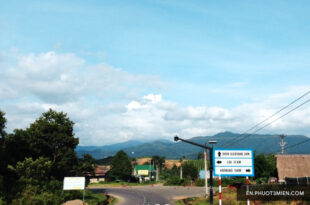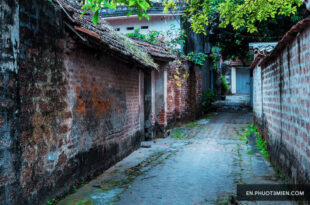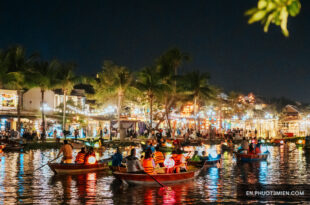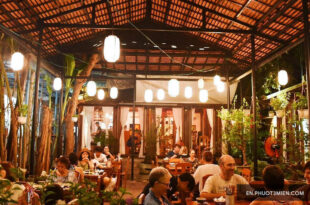Hoi An’s Traditional Festivals
Only 30 kilometers to the south of Da Nang city, Hoi An is often added to travel itineraries when you visit Da Nang. And this is for good reason! This remarkable city has its own features that differentiate it from one of the most liveable cities in Vietnam (Da Nang). This time, we are going to learn about its traditional festivals and their nostalgic stories
Vietnamese people have an old saying: “When you drink water, think of its source”. This principle can be applied most evidently to traditional festivals that have been held for hundreds of years. Here we are in Hoi An, one of the most ancient cities in Vietnam, offering the world so many festivals that are both fascinating for tourists and precious for culture preservation. Despite its humble area, Hoi An city has always surprised people with its colorful and profound historical background, luckily showcasing many time-honored festivals. Today, we will discover their stories and unravel their beautiful values in preserving and honoring Vietnamese ancestors. So, here is all you need to know about the traditional festivals in Hoi An.
Tet Nguyen Tieu
Due to our geographical location and China’s historic impact, Vietnam has adapted many of China’s valued traditions and gradually promoted them to integrate with our cultures. Pleasantly, Tet Nguyen Tieu is no exception. After all these years, it still remains as one of the most popular festivals in Hoi An city, which has the second largest number of Chinese-Vietnamese people in Vietnam, only ranked behind the famous District 5 in Saigon. This is also the reason why Hoi An city still treasures these originally Chinese festivals: to honor and preserve the beauty of this major community’s values, not only for native Vietnamese but also for foreign tourists.
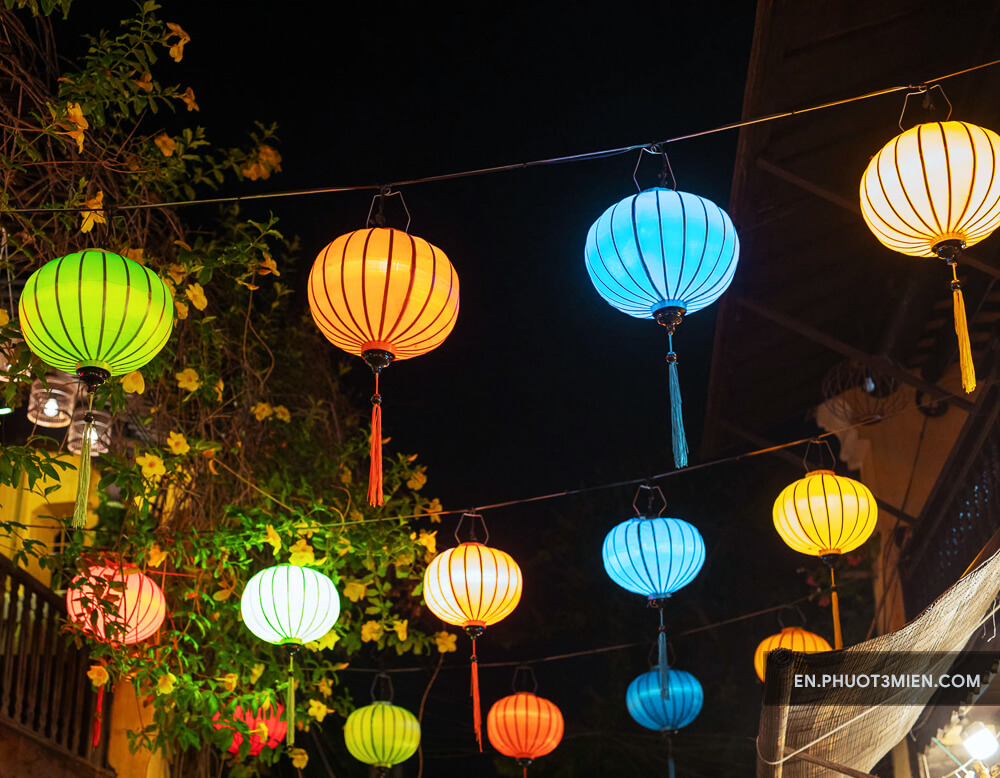
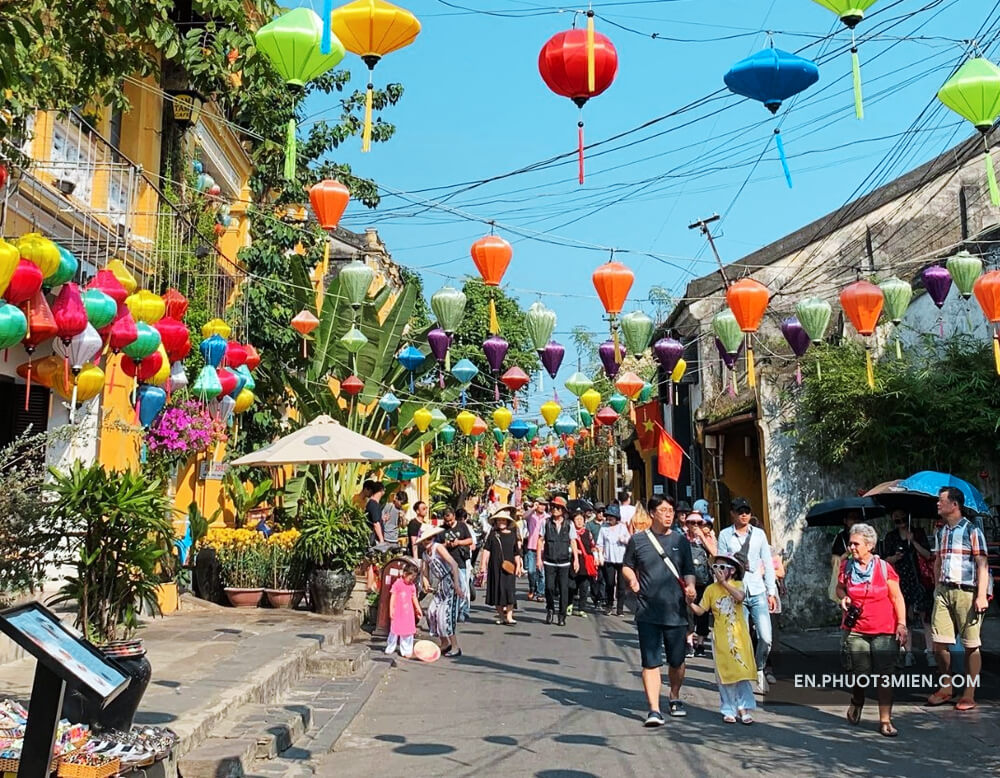
Before getting into the details of this charming festival, there’re some linguistic explanations you should know about. Since this is an exotic event, its name derives from the Chinese-Vietnamese language, also known as Han Viet language with a very common use among Vietnamese from ancient literature to daily communication. In this case, “nguyen tieu” means first night and it explains the festival’s purpose to celebrate the first full moon of a year. Back in the imperial era of both countries, the emperors would organize momentous ceremonies to formally praise distinguished scholars during these nights. Under the brightest moonlight of the month, it was absolutely a perfect occasion to put together such events. It’s also said that common people outside the royal palace had their own way of celebrating this night, which was to carry lanterns out in the streets, adding wonder to the shimmering night.
Tet Nguyen Tieu will take place annually on January 14th of the Lunar year and it often lasts for two days until the full moon starts to fade. This period often falls toward the end of February or the beginning of March in the solar calendar. Traditionally, this festival comprises many ritual practices such as preparing offerings for family ancestors, cleaning the altars, making prayers for the whole country’s peace and prosperity.
Nowadays, these activities are still kept among multi-generational families and more engaging ones are increasingly popularized, namely lantern carrying. This activity was later developed into floating lanterns, which light up Thu Bon river with the helping hands of hundreds of residents and tourists in Hoi An city. What are you waiting for? Come and get a view of this marvelous scene right here in this lovely ancient city!
Full Moon Festival
Anybody who has traveled to Southeast Asian countries must be familiar with this vibrant festival. Full Moon, or Mid-Autumn Festival, is another unique cultural event that China has brought to not only Vietnam, but also other nearby countries in the region. Also observed by Singapore, Malaysia, Indonesia and the Philippines, the Full Moon Festival takes place on August 14th in the Lunar calendar, and in late September to early October in the solar calendar accordingly. The moon will reach its full period each month, but it is proved to be the brightest and most complete in the fall, or August in particular. Over time, people have decided to celebrate nature’s nocturnal beauty and send prayers to their ancestors for blessings in harvest production.
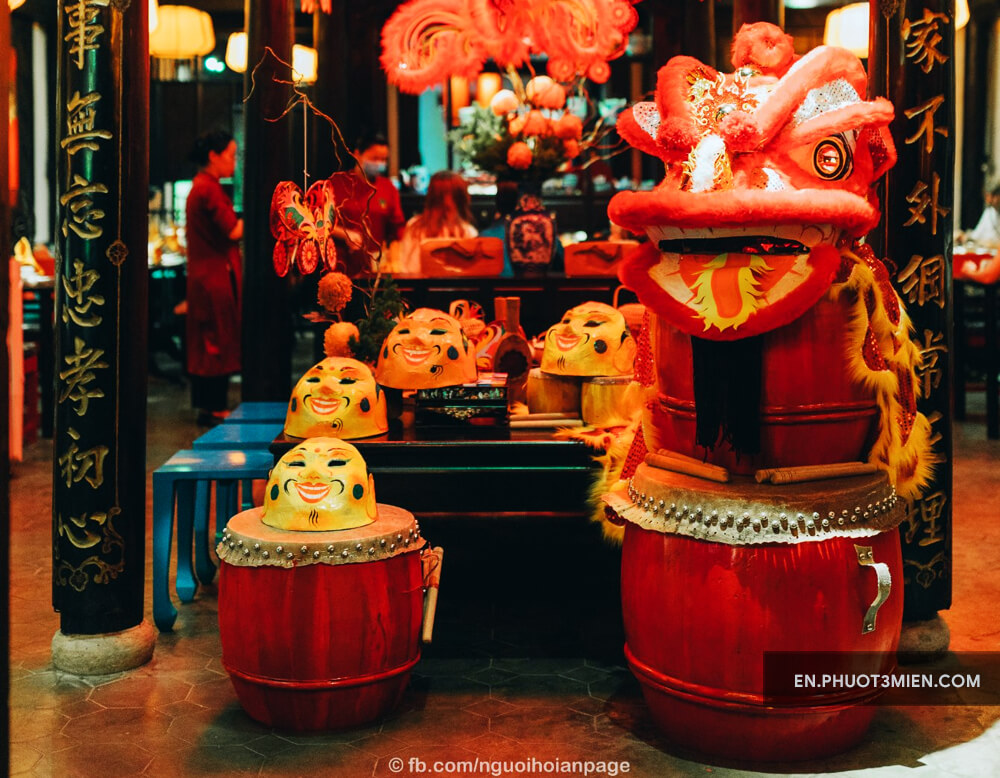
There is no doubt that Hoi An city puts on the most beautiful and captivating Full Moon Festival, which also offers many interesting activities along the way. One of my favorite shows is lion dance, in which dancers are dressed in lion costumes and form a long line that looks like a lion’s body. Its head is held by one main dancer, and the whole crew will dance to the drum beat. This kind of activity is very engaging for children especially, sometimes they even form a mini lion dance crew!
Another thing to bear in mind about this traditional festival is that it also has lantern activities because these enchanting lights have become really popular on the first full moon nights of each month in Hoi An. And like I said before, August is no ordinary month. In addition to the charming lights of these special full moon nights, lanterns are here to elevate the festival’s atmosphere and grace. Mooncakes are also popularly eaten during the festival, traditionally made from lotus seeds, green beans and salted yolks stuffed inside the delicious brown crust. What a perfect combination to fulfill just one night right? You can satisfy both your eyes and your taste buds!
Lantern festival in Hoi An
Due to the popularity of the lantern activity during the Mid-Autumn festival, the people of Hoi An eventually formed a festival for this activity alone. It is held on the 14th of each month according to the Lunar calendar. However, this very special lantern festival has moved beyond just a celebration of a full moon night. It is a time for families, friends and lovers to gather around, together lighting up charming lanterns and sending along prayers for their loved ones. These lanterns are made with wooden frames and a stretched fabric cover containing the light inside, making them suitable to carry in your hands. Or, more exclusively, you can light a handmade paper lantern containing a small candle, and let them float on the serene Thu Bon river.
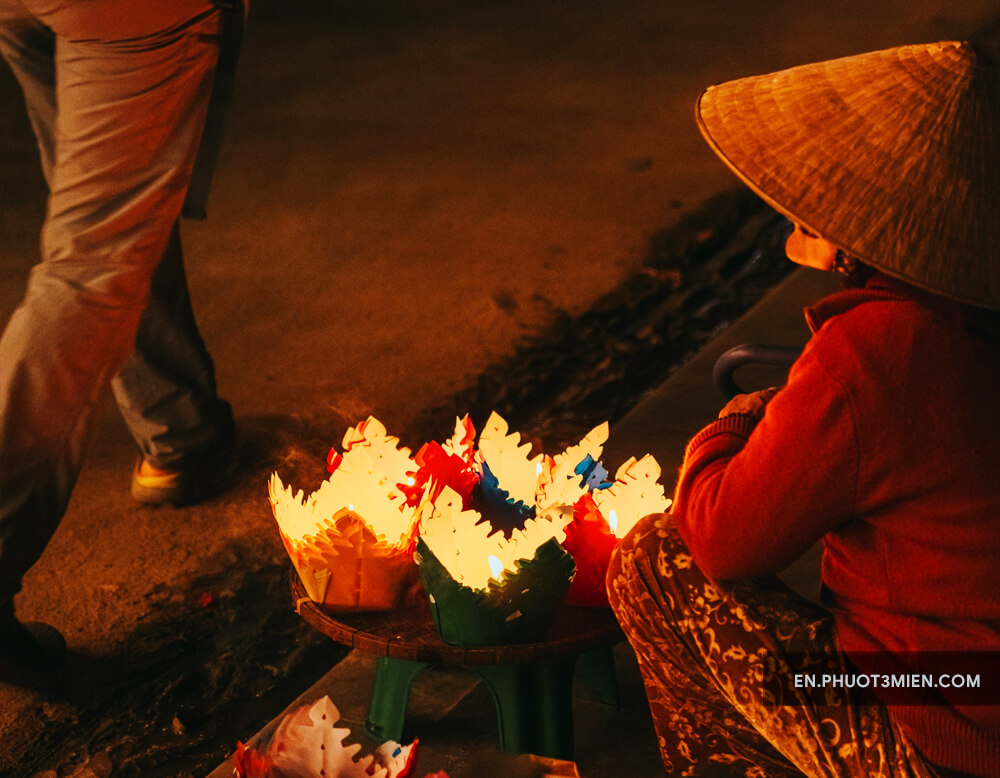
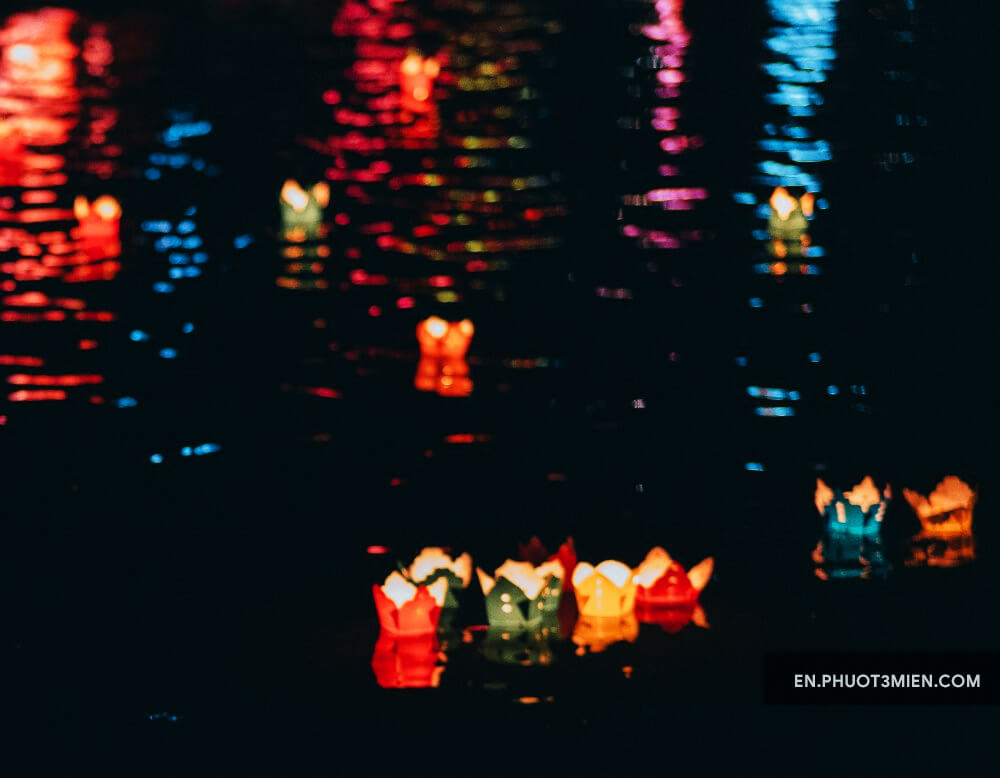
Take a boat ride to the middle of the river, gently drop your lanterns on the surface, and make a wish as it slowly drifts away. There you go! You’ve had the most magical night of celebration in Hoi An, when the moon appears in its most beautiful shape – fullest and brightest.
Note down these dates for lantern festivals in Hoi An 2022, 2023 and 2024:
2022 Hoi An Lantern Festival dates
| Month | Hoi An Lantern Festival Dates |
|---|---|
| January | January 16th, 2022 |
| February | February 14th, 2022 |
| March | March 16th, 2022 |
| April | April 14th, 2022 |
| May | May 14th, 2022 |
| June | June 12th, 2022 |
| July | July 12th, 2022 |
| August | August 11, 2022 |
| September | September 9th, 2022 |
| October | October 9th, 2022 |
| November | November 7th, 2022 |
| December | December 7th, 2022 |
2023 Hoi An Lantern Festival dates
| Month | Hoi An Lantern Festival Dates |
|---|---|
| January | January 5th, 2023 |
| February | February 4th, 2023 |
| March | March 5th, 2023 |
| April | April 4th, 2023 |
| May | May 3rd, 2023 |
| June | June 1st, 2023 |
| July | July 1st and 31st, 2023 |
| August | August 29th, 2023 |
| September | September 28th, 2023 |
| October | October 28th, 2023 |
| November | November 26th, 2023 |
| December | December 26th, 2023 |
2023 Hoi An Lantern Festival dates
KKday is a travel APP platform offering over 20,000+ online products such as: tickets for amusement parks, outdoor services, sightseeing tours, culinary experiences, transportation, accommodation, courses, and local culture... Currently, there is a summer promotion with discounts up to 50% and coupons up to 250K VND off.

Attractive discount codes such as: 100K VND off for new accounts, 150K VND off summer promotion, 250K VND off, KKday birthday celebration...
| Month | Hoi An Lantern Festival Dates |
|---|---|
| January | January 24th, 2024 |
| February | February 23rd, 2024 |
| March | March 23rd, 2024 |
| April | April 22nd, 2024 |
| May | May 21st, 2024 |
| June | June 19th, 2024 |
| July | July 19th, 2024 |
| August | August 17th, 2024 |
| September | September 16th, 2024 |
| October | October 16th, 2024 |
| November | November 14th, 2024 |
| December | December 14th, 2024 |
Bong Bridge Festival
We have gone through Tet Nguyen Tieu and the Full Moon Festival, both of which come from the Chinese community in Hoi An, and can be celebrated in other cities. Now I present you the one festival that can only be found in our lovely Hoi An city – Bong Bridge Festival. Taking place annually on January 7th of the Lunar calendar, this very special occasion is pulled off by the Tra Que villagers to commemorate their creators and wish for better weather for the next harvest.
The latter part is quite important since Tra Que has been a traditional vegetable village in Hoi An for around 300 years. It is now a symbolic destination for Hoi An people and tourists. These villagers still retain their honorable and longstanding culture of planting vegetables in an organic way, a very rare thing to see in modern Vietnam with the application of advanced technology in planting.
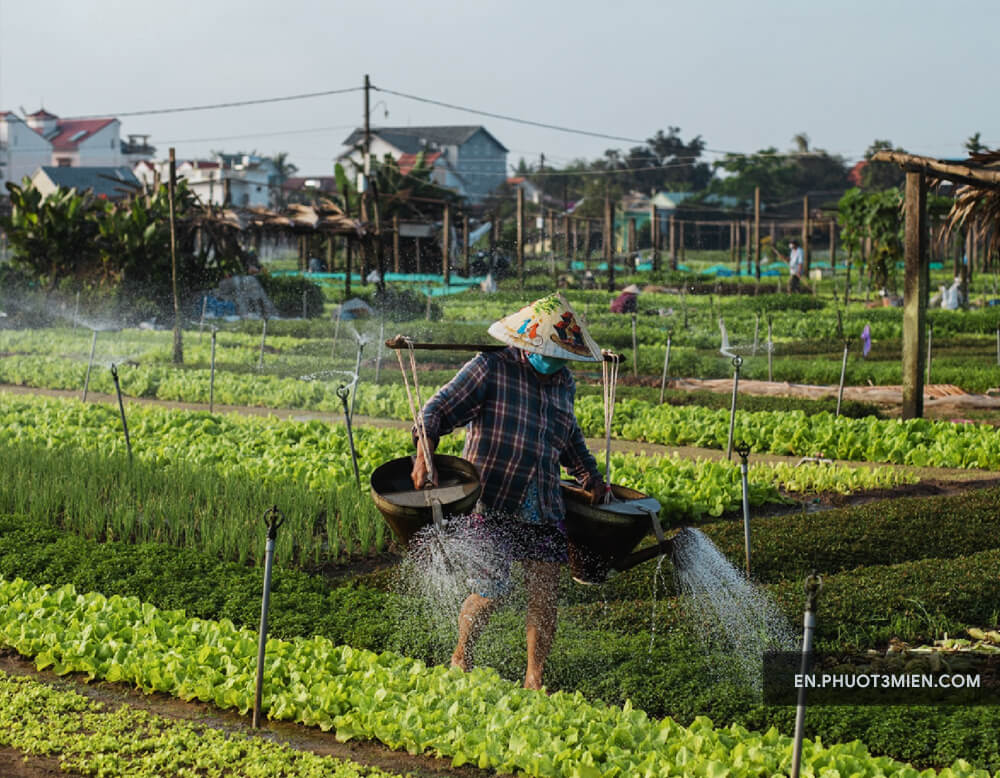
This particular festival is celebrated in many ways, followed by a new planting season. First, they prepare traditional offerings and erect an altar to pay their respects to the village’s creators. The main hosts who carry out this activity must wear a certain outfit and know the appropriate manners to send prayers to their ancestors. Next, the hosts plant a ceremonial pole, marking the right time to begin planting new vegetables.
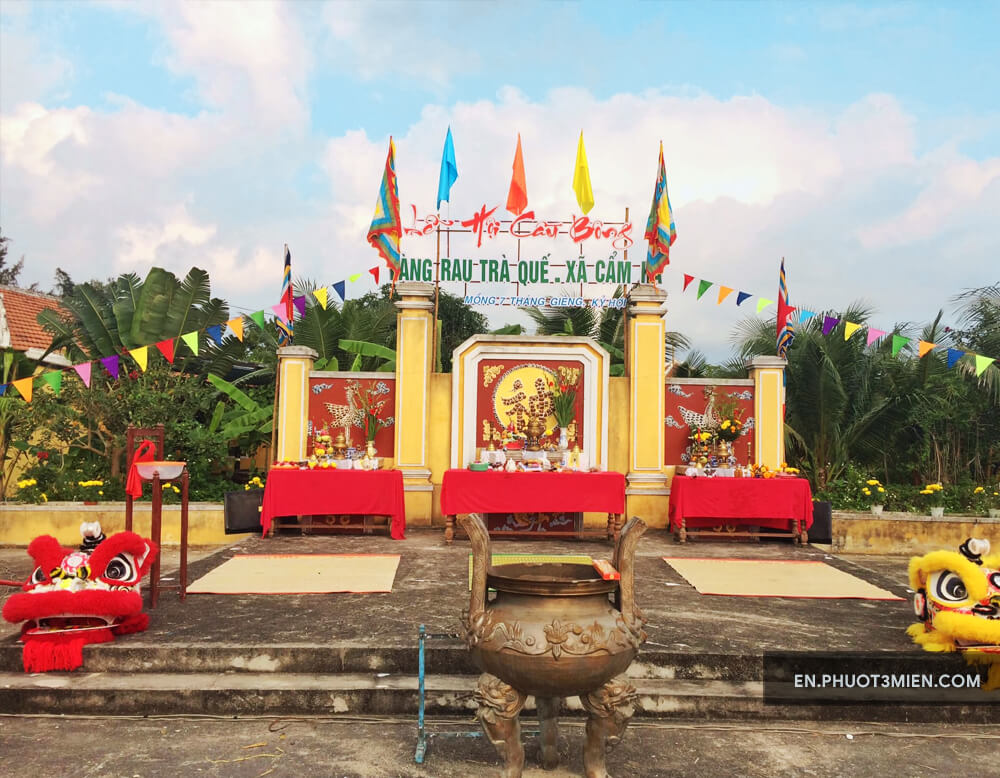
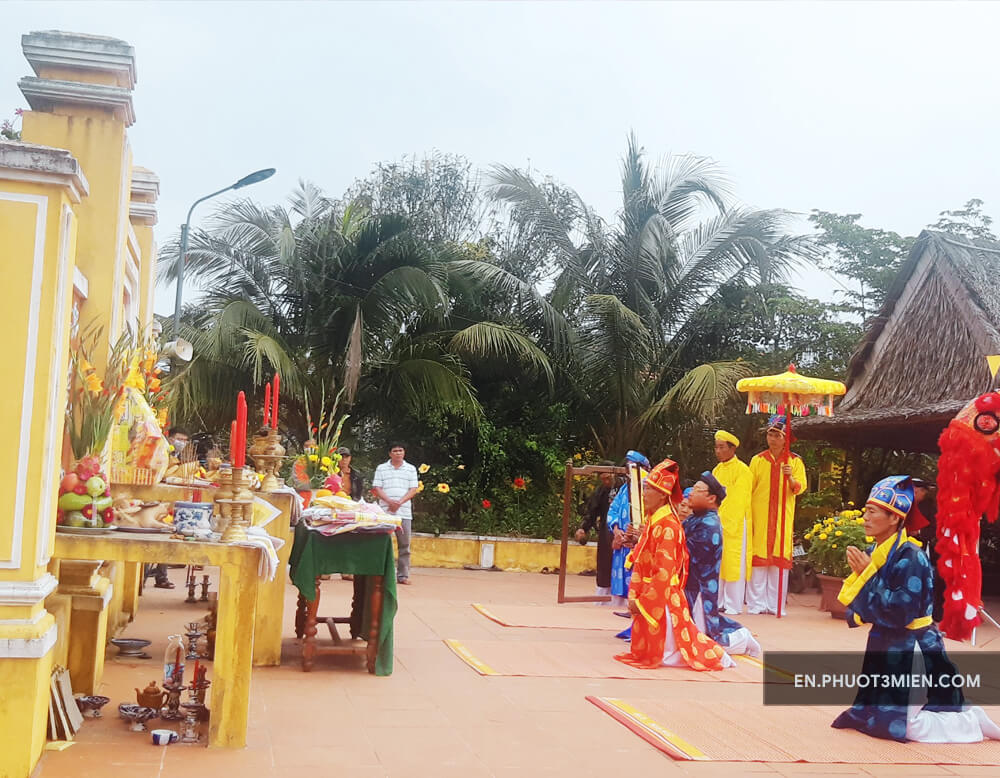
After these ritual practices are done, now it’s time to have some fun. Like many festivals in Vietnam, Bong Bridge Festival has many side activities that are becoming highly popular among the Vietnamese communities and with foreign travelers, creating a fascinating tourist attraction without too much advertising efforts. Tra Que villagers will organize various contests such as carrying and planting vegetables in their traditional way. The contestants will have to use an actual hoe to shape and clear soil just like the people there used to do.
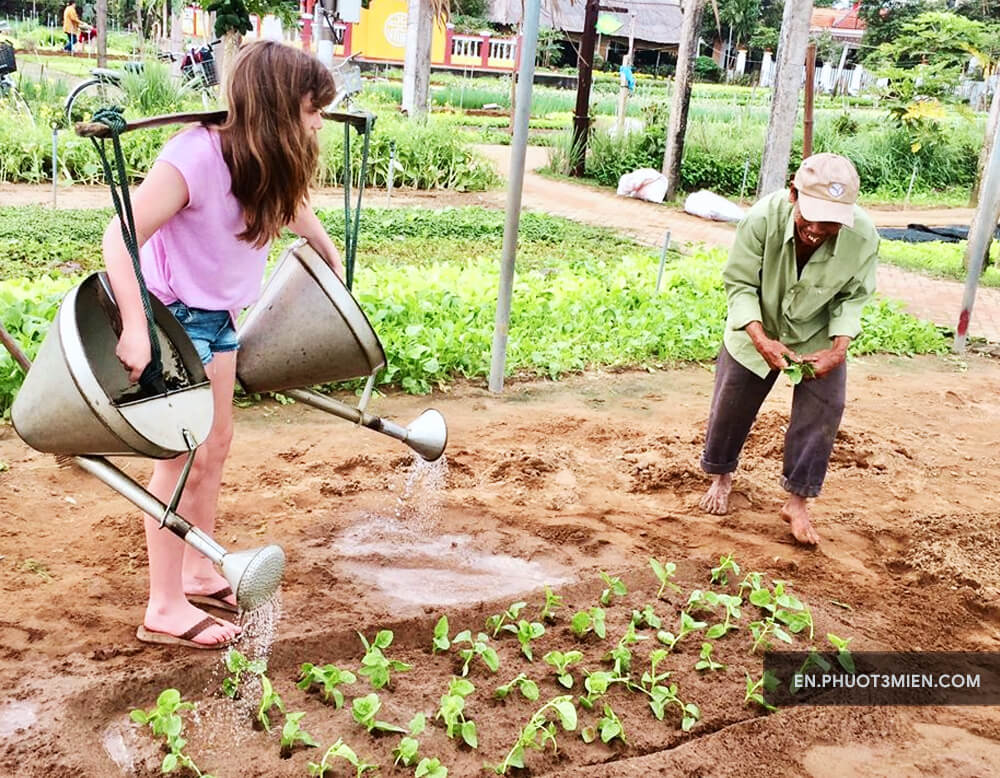
Another interactive activity is the prawn wrapping contest, which receives more and more attention from foreign tourists. The reason why this act is a contest is because it’s extremely difficult to wrap the prawns with only vegetables. Other than that, the visual presentation is the decisive factor. You may wrap prawns firmly, but you may not wrap them aesthetically. As expected, the vegetables used in this contest are fresh from Tra Que village, making the dish a regional cuisine with beauty from the outside and pleasure from the inside.
Pay this lovely village a visit and you’ll see what I mean!
The Great Fish Death Anniversary
Derived from the Hoi An community belief that their Fish God blesses good weather and a good catch, the Great Fish Death Anniversary is particularly important to the fishermen here. Celebrated in March of the Lunar calendar, this festival brings hope and assurance to the fishermen every time a new catching season begins. Similar to the Bong Bridge Festival, the locals decorate the altar and prepare offerings to honor the Fish God, praying for their blessings with a productive catch and mild weather.
Every festival has its unique features, even though the Great Fish Death Anniversary shares similar qualities to the Bong Bridge Festival. Due to this area’s background in fishing, this anniversary has an interesting decorative theme in the marine style. The flamboyant altars, boats and small ships are also set up with proper lights and flowers, as to bring the ceremony into the fishermen’s boats when they are far away from home. The prayers then will be chanted only by reputable and experienced elders in the village. At this point, all the boats will sail to a certain distance in the sea to confirm their trust in the Fish God.
Thanh Ha Pottery Village Festival
Being a century-old village specializing in making pottery, Thanh Ha whispers a long story about its establishment. It was built around more than 500 years ago, by some talented craftsmen from northern Vietnam. After settling down in Hoi An, they continued making pottery mostly serving ordinary residents’ needs by creating items such as household wares and worshipping items.
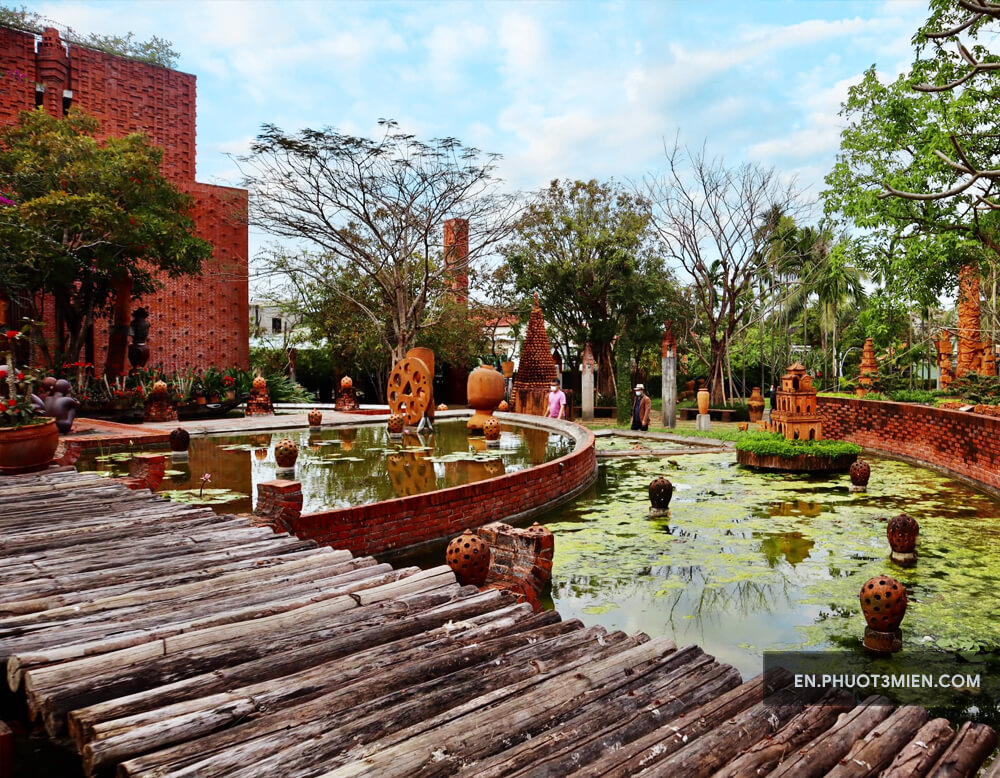
Word traveled fast, soon the Vietnamese feudatory dynasty at that time decided to use their skills to make exclusive pottery products for traditionally-designed architecture in Hoi An. They were later even listed in our ancient and official geographical record – Dai Nam nhat thong chi, a book which I believe every Vietnamese student has studied or knows about even if they didn’t have a choice. This is a powerful message to the great historical values that Thanh Ha craftsmen have brought us.
Again, this festival is another occasion where we can clearly see the philosophy of the saying “When you drink water, think of its source”. The main reason behind this festival is to honor the creators of these great pottery works, which has played a practical role in the past and carried on as culturally significant in the present and future. This festival has many ceremonial activities held by local people to pay their respect to the first craftsmen and educate the young generations about our precious historical values. Besides that, this is also a chance to discover young talents to help preserve and develop the village’s business.
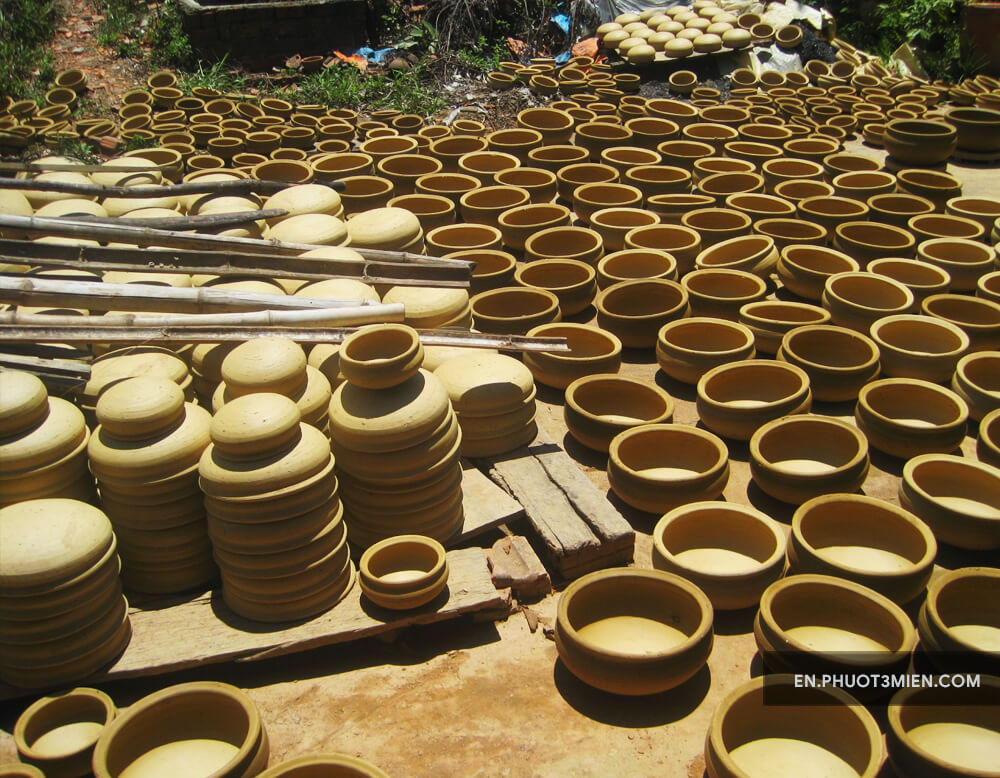
Taking place on January 10th of the Lunar calendar, Thanh Ha pottery festival often demonstrates a very strong local sense because it is not popular among the Vietnamese from other cities, let alone foreign travelers. I’m sure Thanh Ha pottery village tours are everywhere on the Internet, but its signature festival is not. I don’t know about you, but I think trying a potter’s wheel is not as extraordinary as taking part in a traditional march with palanquins. Or enjoying a Vietnam classical opera – hat tuong with skilful singers in glamorous outfits. Or joining in many pottery contests with the locals and witnessing with your own eyes how a Thanh Ha village product is made. So if you’re looking for an extreme Vietnamese experience, come to this festival and embrace it all!
Hoi An is truly a city with an enormous cultural background, fused together with the Chinese culture to become one of the most visited places in Vietnam. Its traditional festivals are nothing more but the core values that Hoi An has to offer to the world. Experience the city and share with me what you think about these colorful festivals.
Some more Hoi An related articles you may enjoy:
Celebrating Tet in Central Vietnam: Hue, Da Nang and Hoi An
How to get to Hoi An from Da Nang
If you enjoyed reading this article and would like some more fun info about what to see, do and eat (and a bunch of interesting cafes!) in Vietnam, follow us at the Travel Blog Phuot3mien!
